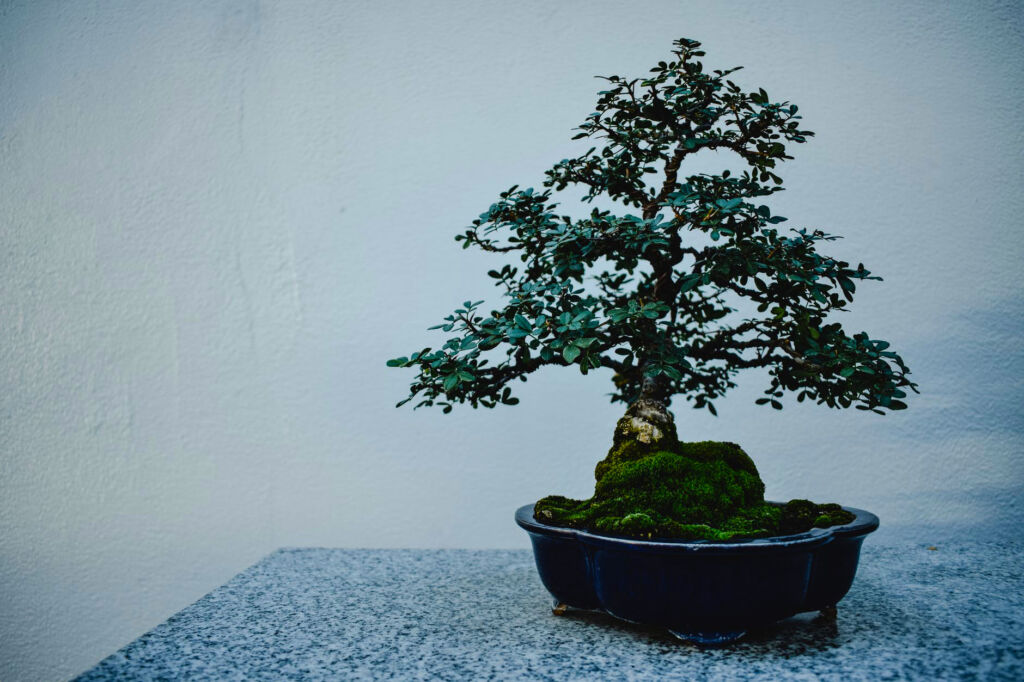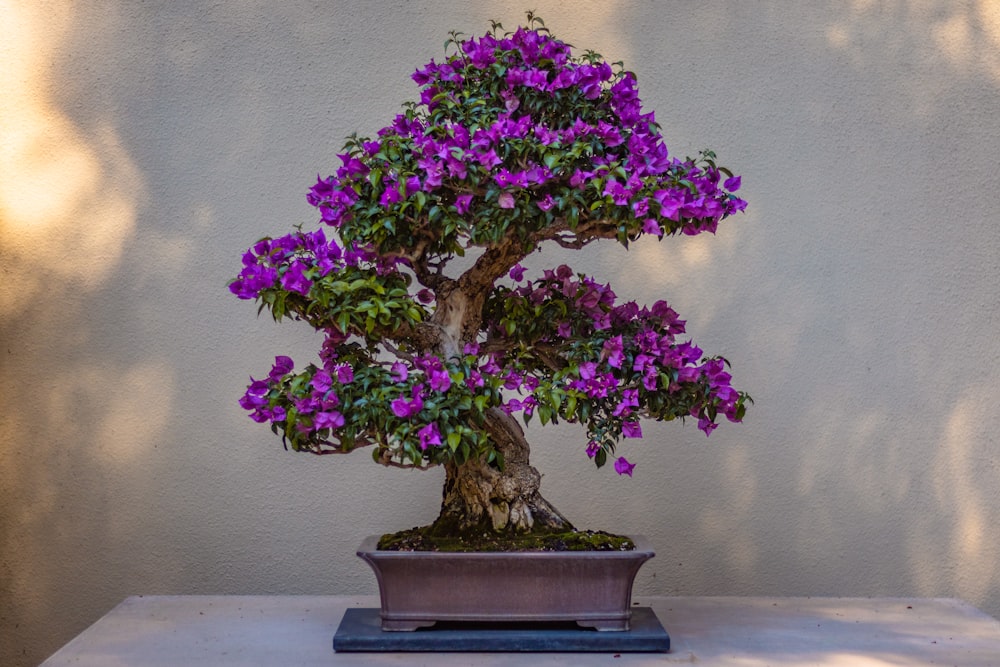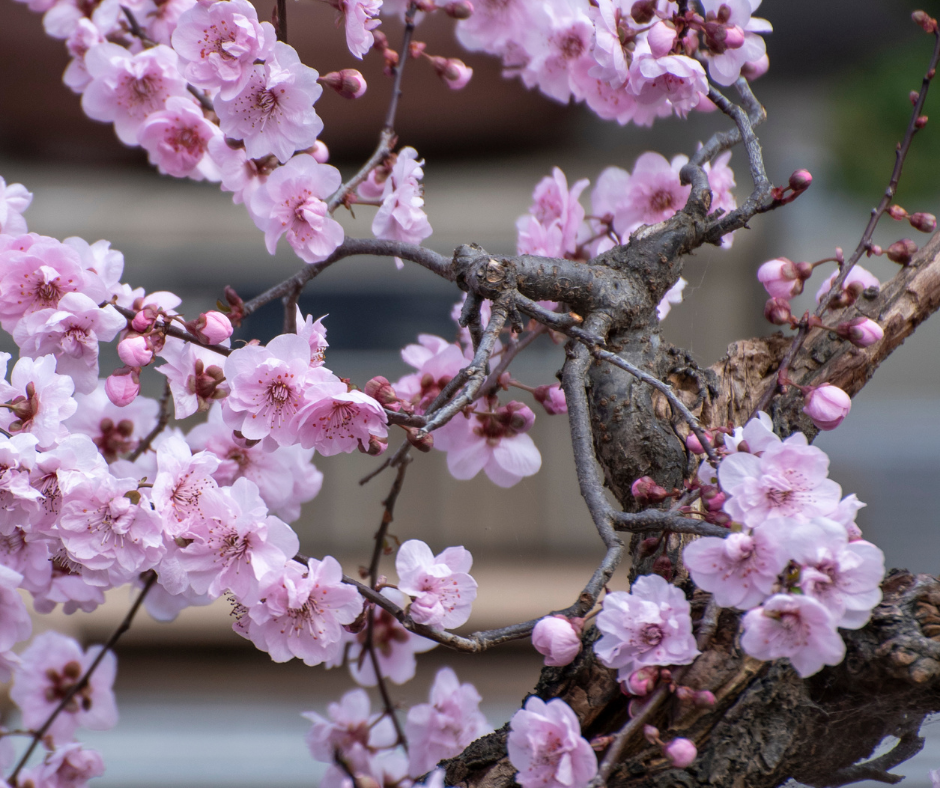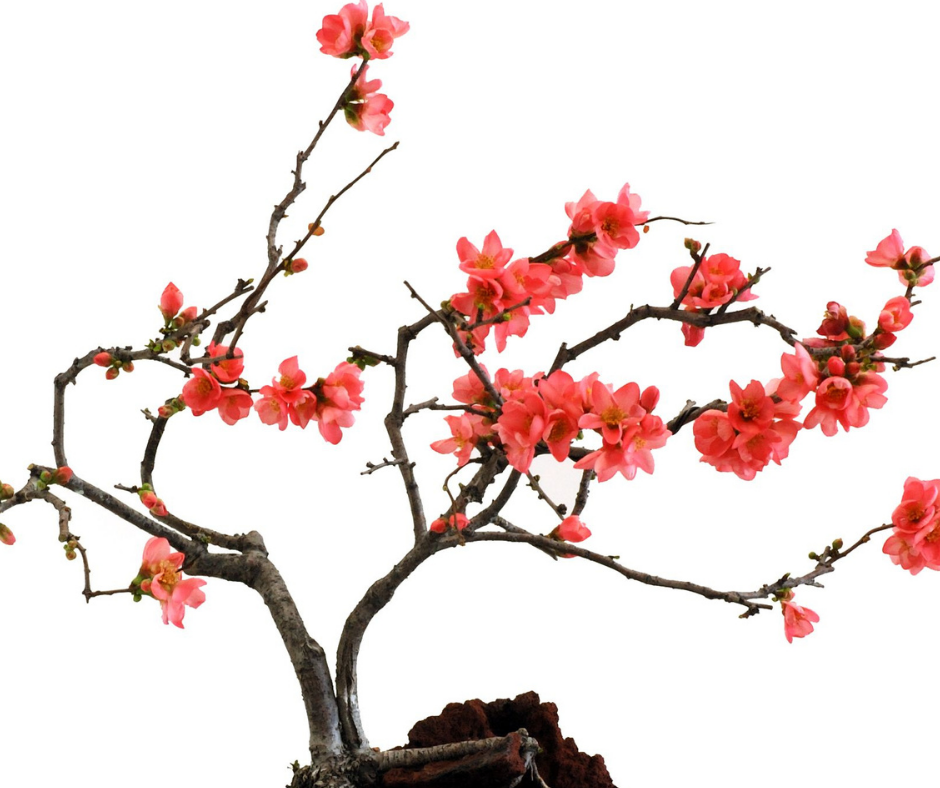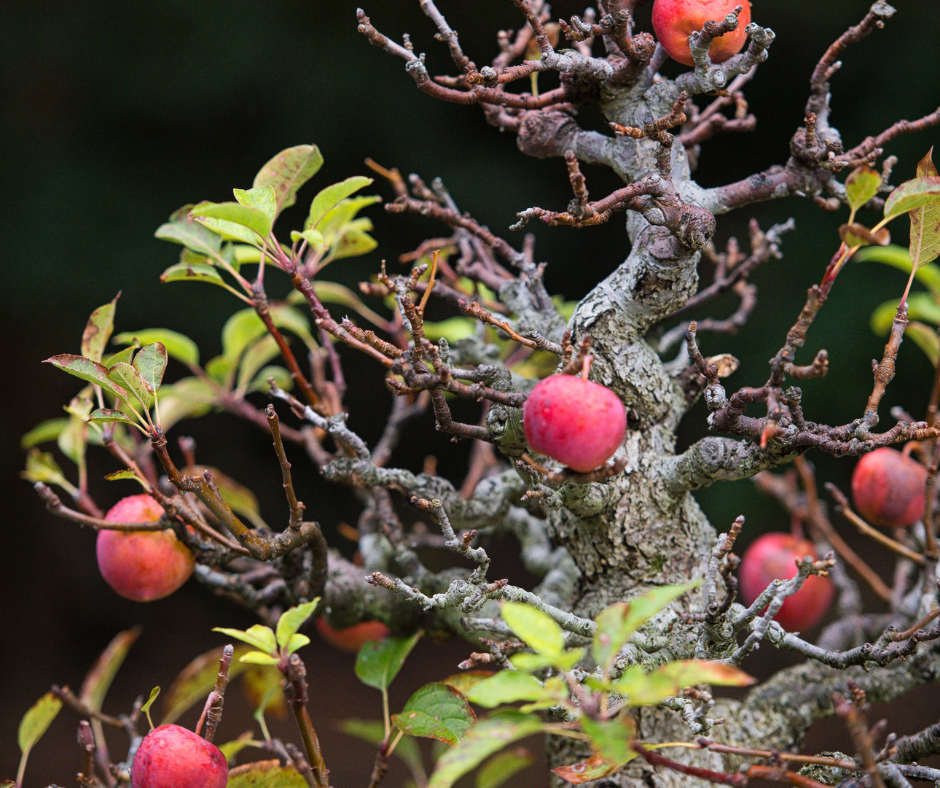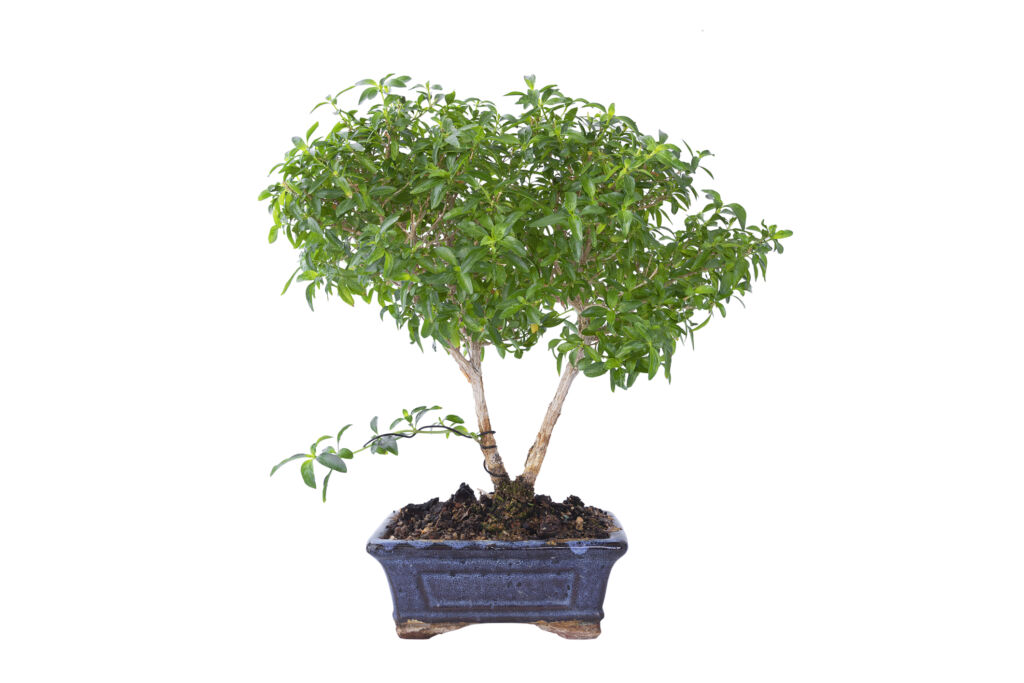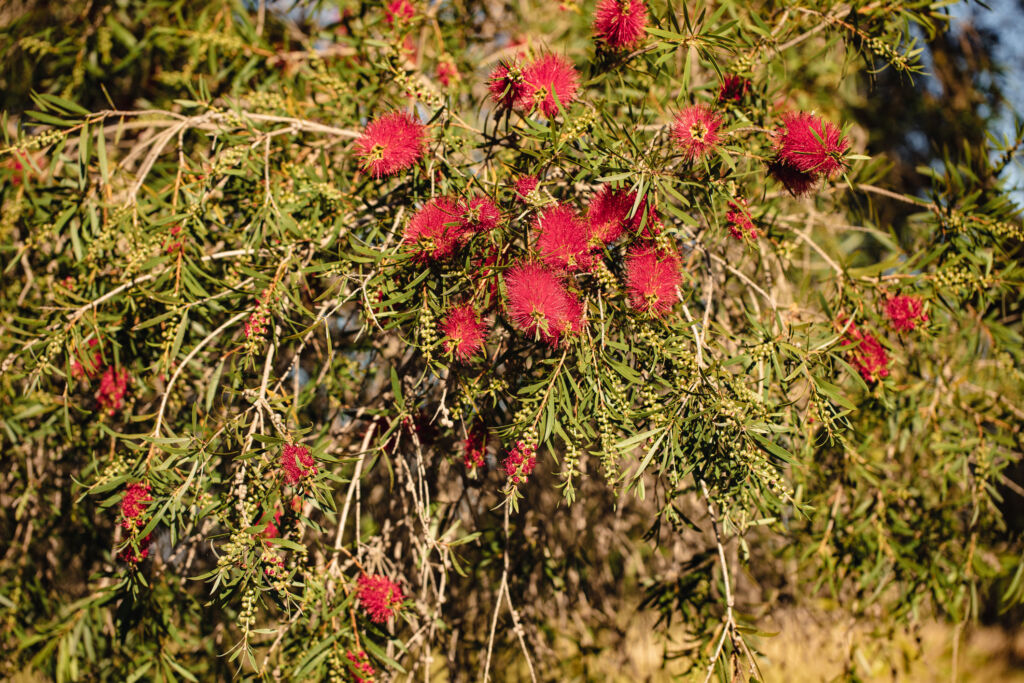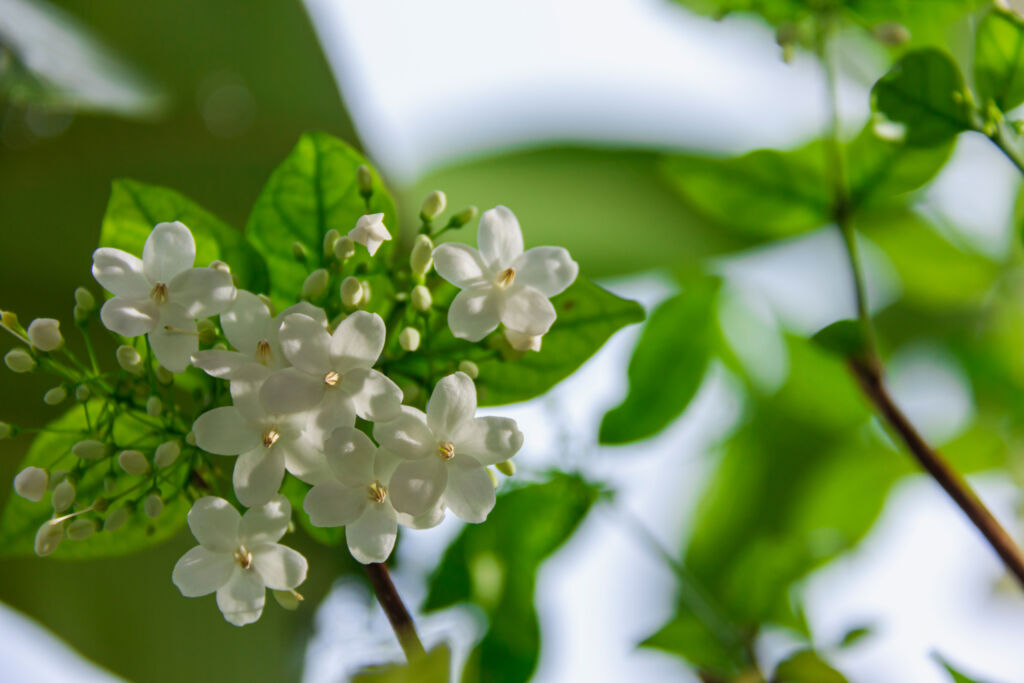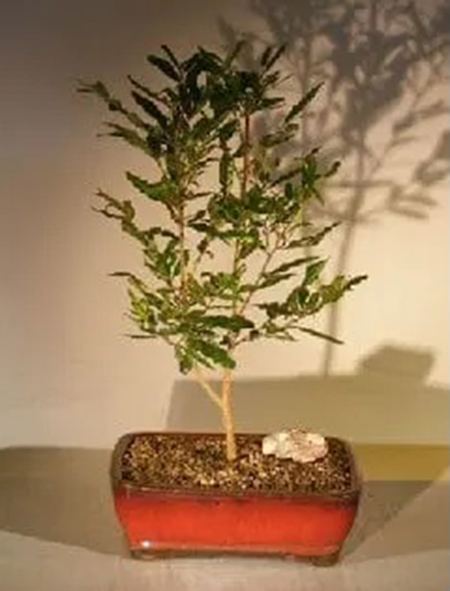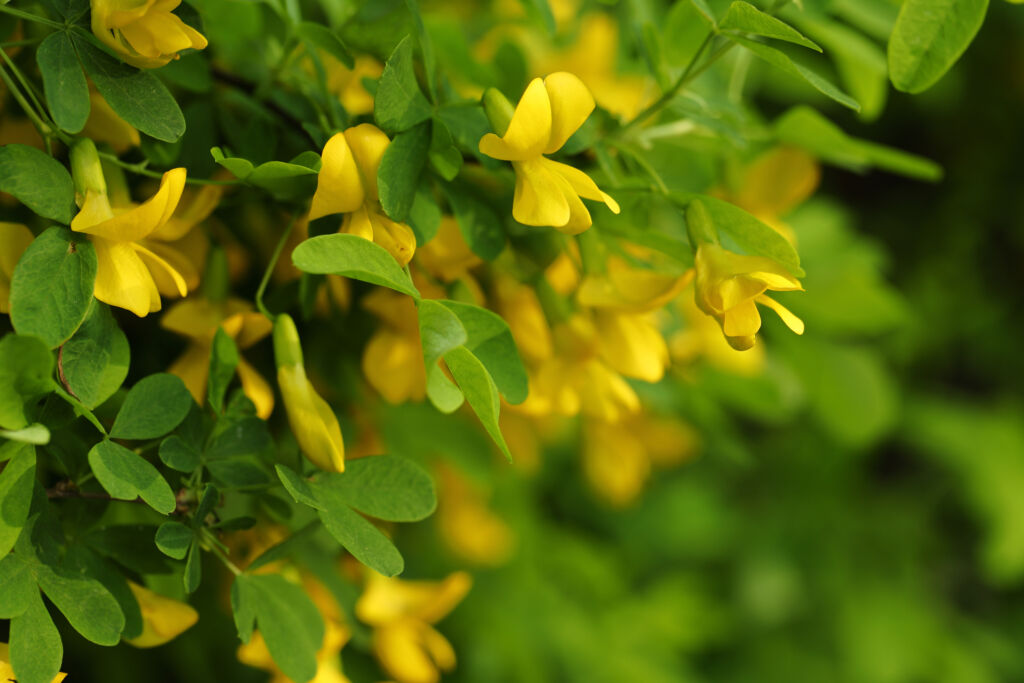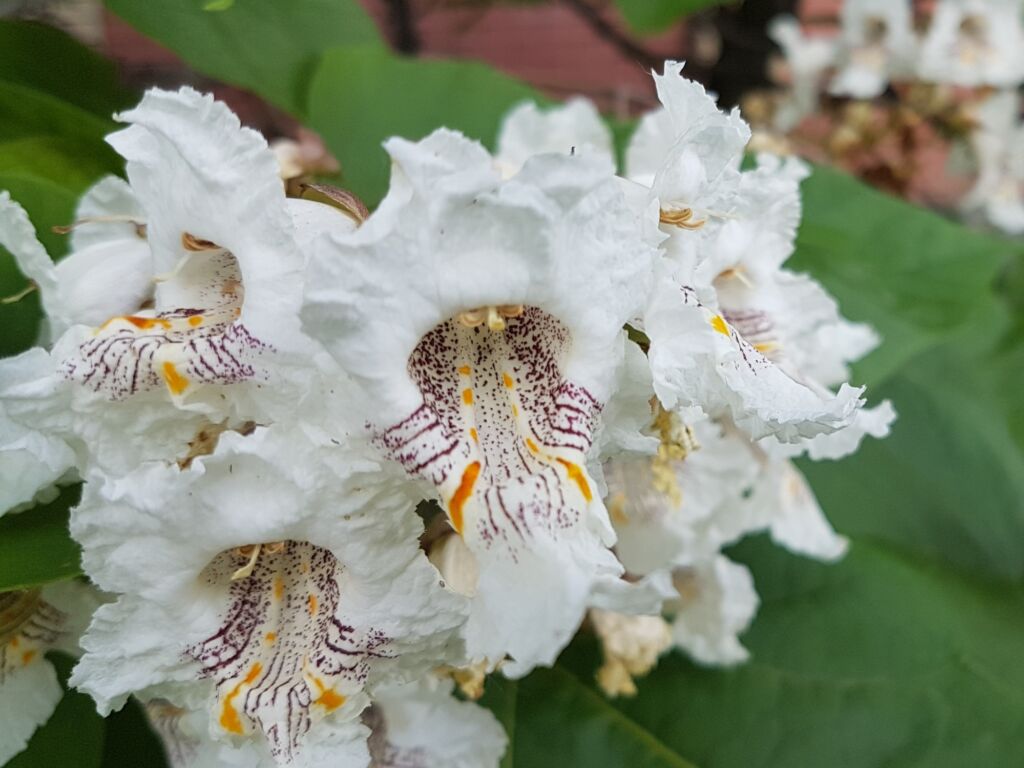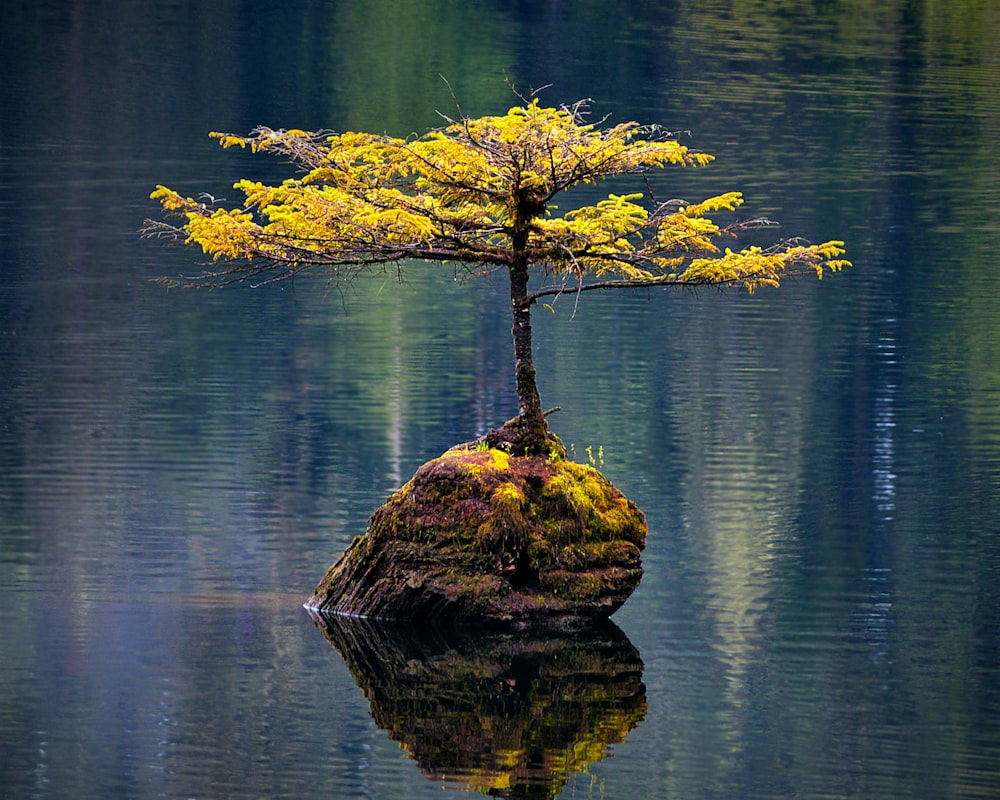HousePlantJoy is supported by our audience. When you purchase through one of our links, we may earn a small affiliate commission. As an Amazon Associate I earn from qualifying purchases. Your cost is not affected.
==================
12 Amazing Favorite Flowering Bonsai Trees That’ll Perk Up Your Space!
Our Favorite Flowering bonsai trees look great! Having one at home could be an interesting focal point in any part of the house, even in the kitchen. It could also be the centerpiece or a feature in your garden and terrace. As a miniature version of a regular-sized tree, it won’t fail to delight both owner and visitors. There’s a certain charm and advantage in owning a down-sized version of a tree.
Regular trees are tall, require sunlight, water, open space, the ground to grow roots, nutrition, and stability. It’s mostly impractical and inconvenient to have them indoors. Unless it’s a huge mansion with lots of open space within, and a spacious courtyard to boot. But the growing trend today is compact and efficient living spaces that connect to the outdoors.
So, a bonsai tree that flowers could be a delightful surprise to give. The recipient would love and treasure it. For others, it might be a hobby, a fulfilling one that could also generate extra income. Many other possibilities may be discovered as you navigate through this article. Let’s start with some information about the art of bonsai. They’ll help you appreciate the 12 ones presented here.
Japanese Bonsai Tree Styles
The Japanese are known for their minimalist preference. Which goes well with trends today. Here are the traditional Bonsai tree styles in the Japanese tradition:
- Formal Upright
- Informal Upright
- Cascade
- Semi-Cascade
- Raft
- Slanting
- Literati
- Forest or Group
- Driftwood
- Split-Trunk
- Weeping
- Windswept
It’s easy to imagine what each of these would look like with your imagination. Bonsai trees are alive – they grow, bear flowers, and need care – and they may die when not cared for properly by their owner. Since it’s alive, it can show or acquire two, or even more, of the styles listed above. That’s wonderful as it adds to the uniqueness of the Bonsai tree.
Bonsai Tree Aesthetics
A Bonsai tree is a work of art. Just like any work of art, it is bound by certain aesthetics, in this case, through Japanese tradition. That tradition has been honed and practiced for centuries. Let’s take a quick look at these aesthetic rules:
- Asymmetry: Branches and roots should not be symmetrical, whether in their radius or their right and left sides. There’s more drama and appeal in asymmetrical configuration.
- Miniaturization: It’s the bonsai’s most evident feature. The trees that are used are big and would look out of proportion inside a house. Except when it’s a building with a high ceiling and a skylight at the roof to let in sunlight. A bonsai tree is made small without compromising the desired natural proportions of its roots, trunk, twigs, branches, leaves, flowers, and crown. With its smaller size, it can be put in a container filled with the right kind of soil. Then, the bonsai tree could be brought inside the house for the owners to enjoy it. Since it can be moved around, it must be placed once in a while outdoors. Just like other plants, bonsai plants require a daily dose of sunlight.
- Proportion: As the miniaturized or scaled-down version of a full-grown tree, the proportion of each of its parts with the rest of the tree should be kept intact. Or at least the proportion must nearly be close.
Know the Bonsai Tree Containers
It’s easy to miss the importance of the bonsai tree’s container. Here are some of them.
In the early development phase of the bonsai, they may be placed in informal or regular containers. These containers can also be used for the occasional need for trees already planted in a bonsai pot. The second one, the big growing pot can accommodate a few bonsai plants that will benefit from more soil available. This technique stimulates the roots to develop and grow. A third container type called the training box is for just one bonsai plant. It holds less soil to stimulate growth to the ideal size and shape before it is transferred to the formal bonsai pot.
12 Distinctive Bonsai Trees and Their Beautiful Flowers
There are many attractive bonsai trees that bear flowers. And the number just keeps growing. Let’s look at a few of the popular ones.
01 Mount Fuji Serissa Bonsai
A phenomenal kind of small, evergreen shrub found in Southeast Asia, the flowering Mount Fuji Serissa tree is perfect for bonsai. With its small leaves and knobby, twisted trunk, it makes this bonsai eye-catching. The leaves are green marked with streaks and a white margin. The flower buds are pink and grow into tiny white star-shaped flowers. Around 2 to 3 times a year, flowering occurs.
02 Brush Cherry Bonsai
The Australian Brush Cherry is a flowering plant indigenous in New South Wales. It’s got small, firm, shiny evergreen leaves and white flowers. Red highlights appear on the leaves when it gets sufficient sunlight exposure. When its surroundings are agreeable, the tree produces whitish balls that in time turn into flowers and berries. Occasional misting is recommended.
03 Japanese Quince Bonsai Tree
From late winter through early spring, extraordinary reddish and pinkish-white flowers create an exciting floral display. Since the Japanese quince bonsai is a deciduous bonsai tree that flowers, it may be left outdoors. The leaves of the flowering Japanese quince bonsai tree are configured alternately, with serrated edges. The five-petalled blossoms mature to become fruits called pomes with five carpels. Then they ripen in late autumn.
04 Crabapple Bonsai Tree
Among the ideal trees for bonsai is the crabapple tree. In early spring before the leaves appear, beautiful fragrant white flowers begin to sprout, almost covering the entire tree. The leaves are small and lobed. In summer, little green pomes or apples emerge, resulting from the enlargement of the flower’s entire fleshy receptacle. In autumn, the foliage begins to turn into shades of yellow, orange, and red. As the fruit matures, its color also changes. Flowering crabapple bonsai trees are easy to grow and resistant to pests and diseases. By the winter months, they will have shed all their leaves.
05 Lavender Starflower Bonsai Tree
These attractive indoor favorite flowering bonsai trees are indigenous to Africa and Australia and have 400 species that have glossy, dark-green leaves. At the start of summer, and occasionally for the rest of the year, fabulous wide purple flowers grow along its stem. It’s an ideal bonsai tree to have indoors. But it needs to have some sunshine to generate blooms. The flowering lavender starflower tree can withstand drought which makes it the perfect bonsai tree for beginners and up to the experts. Forgetting to water it occasionally isn’t going to harm it.
06 Snow Rose Serissa Bonsai Tree
Native to Japan, the flowering snow serissa bonsai tree produces knockout rose-shaped, white miniature blossoms and they can bloom any time. This tree flowers abundantly with either single or double white blossoms. The leaves are small and the tree grows slowly. It’s an ideal bonsai tree indoors.
07 Dwarf Weeping Bonsai Tree
Weeping twigs and branches are curved and bent downwards somewhat like the posture of a person crying. In the case of the dwarf weeping bonsai, its weeping twigs and branches are long and slender. And the small fruits are edible. The flowering dwarf weeping bonsai tree bears only one fruit most of the time, and sometimes two or three. The fruit’s skin is bright red and glossy.
08 Water Jasmine Bonsai Tree
Thriving in Malaysia, the water jasmine tree is the most often used tree for bonsai. Planted mostly as a hedge tree, it’s got lots of twigs and is also used as medicine. It thrives in heat and direct sun. In the winter, this one of our favorite flowering bonsai trees may exhibit somewhat yearly shedding of leaves, or deciduous characteristics. Low temperature, like below 65 degrees Fahrenheit, triggers it. The pendant-like white blossoms emit a fragrant odor.
09 Mickey Mouse Bonsai Tree
Mickey Mouse Bonsai Tree
The Flowering Mickey Mouse Bonsai tree is believed to bring good luck for the New Year in Vietnam. The tight leaves are elongated like an ellipse. Along the leaves’ edges are glossy green serrations (series of notches). The flowers are relatively fragrant and purple. It has splendid red sepals and a few seeds after its blossoms. Often, it resembles the Disney character “Mickey Mouse” when the seeds fall. Growing Mickey Mouse tree isn’t hard. While it grows in almost any well-drained soil, it thrives in soil modified with compost or other rich organic material. The Mickey Mouse plant tolerates partial shade or maximum sunshine.
10 Acacia Bonsai Tree
This flowering bonsai tree has very small feathery, finely divided leaflets on compound leaves. It has a soft medium bluish-green color native to tropical America. Additionally, the slightly rough stems are dark brown, or grey chocolate, with many small, sharp thorns. The thin, yellow, puff-like flowers are very fragrant. They appear three to four times a year in heavy clusters, providing almost year-round flowering. The flowering acacia bonsai tree is usually grown in Europe for the blossoms that are used as perfume ingredients. The fruits have a glossy coat and produce seeds that birds and other wildlife feed on. Excellent as indoor plants and bonsai trees.
11 Mimosa Bonsai Tree
The flowering mimosa bonsai tree enjoys the sun and can tolerate droughts. In such conditions, it folds its leaves to avoid water loss. It will even defoliate, or shed its leaves, under extreme conditions until the rain returns. However, it will bloom all year round. The Mimosa’s blossoms are white with a white base and are self-fertilizing. They look like white popcorn. After flowering, it takes about four months for the long-flattened pods to mature and release their seeds. The hard coat of the Mimosa seeds undergoes scarification and germination typically 5 to 8 days after sowing. It’s a fun tree and so easy to take care of indoors.
12 Wisteria Bonsai Tree
Although Wisteria is a shrub, it can be mistaken for a tree, more so when it’s a bonsai. That’s exactly the reason the flowering wisteria bonsai tree makes it to this list. Look at it and you’d agree. Wisteria climbs around a tree trunk and swirls around branches that make it appear as part of the tree. Its purple-hued flowers add to its attractiveness. You can see wisterias in many parts of Asia, Europe, and the US. It’s an interesting climbing shrub to use to create one of the traditional bonsai tree styles.
Some Helpful Tips for These Favorite Flowering Bonsai Trees
Out during summer, winter
For the majority of bonsai trees that flower, they would be fine indoors with high light. From spring to summer, it’s best to put them outdoors for the sunlight. Then, in winter, they must be brought indoors as the temperature falls. Remember, water your bonsai when you see the soil starting to look dry. Apply water into the pot until you see water streaming out of the pot’s holes.
Boost the soil’s nutrient contents
Since the flowering bonsai tree’s container could accommodate only that much soil, adding fertilizer is needed to make up for the nutrients used up. That’s why bonsai experts advise adding only half the amount suggested. And that it’s done each month at least, excluding winter. Liquid general-purpose soil fertilizer can be used.
More moisture for the bonsai tree
Lastly, our favorite flowering bonsai trees need more moisture, especially in winter when they are inside the house. So, regardless of the type, the heating systems used in homes would significantly decrease the humidity, or amount of moisture, inside. So, a quick fix for that is placing the bonsai tree on a shallow tray. Then, spread gravel on it, like small stones and pebbles. After which pour in the right amount of water. This would generate moisture for the bonsai tree.
Conclusion
Owning a replica of a huge, flowering tree brings about good vibes by taking in all its magnificence and beauty. The information provided about favorite flowering bonsai trees hopefully has inspired you and given you a basic knowledge of what to look for when getting your first one.
In addition, it may also stir up your passion to take it up as a hobby. Then, it could become a home-based side business promoting bonsai trees that bear flowers. No matter how it goes, we hope you had a wonderful time reading about them. If you find this article helpful, please share the link with your family and friends.
Read More:
Bonsai Garden: A Full Guide to Create It

